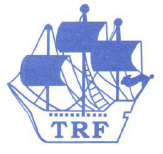Join Now | Free Trial | Login | Membership
Peruvian fishmeal prices are expected to remain stable in coming weeks, having already recently fallen amid strong supply from Peru, Europe and Chile.
"Prices at the moment are stable both in China and Peru," a source from a large Peruvian fishmeal producer said.
Pre-sales of Peruvian fishmeal from this ongoing season appear to be at around 500,000 metric tons, most of which in the process of being delivered to China, Enrico Bachis, market research director for IFFO, the marine ingredients organization, told Undercurrent.
Jean Francois Mittaine, a fishmeal analyst with 30 years of experience in the sector and co-editor of Fish Oil and Meal World, agrees that most Chinese traders stocked up earlier in the year. "All the trade positions have already been taken in March," he told Undercurrent.
Sources pointed out that ongoing deliveries from Latin America, plus older stocks in China would be sufficient for weeks, before a second round of purchases from Peru starts. This might keep Peruvian fishmeal prices stable for some time, according to sources.
Meanwhile, Peruvian anchovy fishery has surpassed 70% of the total allowable catch, reaching 71% last week.
Sources had noted that catches had were lower than earlier in the season. Sources had different views on whether the ongoing season would end in the first half of July or in the second half of the month.
"To date the sector is at about 70% of catch of the quota and there are still supposedly 45 days of fishing, which is usually the end of July 31, when anchovy spawning begins.
From the information received from the analyzes carried out on anchovy, it is not seen that they are close to the spawning stage, for which reason it is estimated that the season lasts until the end of July," one source from a second large Peruvian fishmeal producer noted last week.
"There are still temporary closures in some areas but in general terms, the season is going well, with good fishing efficiency and good distribution of the fishing which allows us to have a significant participation in the purchase of anchovy to third parties with a participation of approximately 7%," the source added.
impact of El Nino on fishmeal production
Torrential rains in Peru earlier this year warmed up sea water temperatures, causing the death of between 30-90% of Peruvian scallops in the water, depending on the area, and had a severe impact on the country's transport network, particularly in Northern Peru.
According to a Chinese fishmeal trader, rain in Peru affected the stock of some Peruvian plants that had not shipped their fishmeal and caused prices of internal freight to the port rose, because of the poor condition of the roads. These were factors supporting fishmeal prices in China, according to the Chinese trader. “This year South America had terrible weather. Peru [South America’s largest supplier of fishmeal and fish oil] caught a lot fish, that's true. But storms destroyed a lot of stuff," he said.
“You need to store it, but if the weather is bad -- temperatures drop and it rains every day -- you will lose a lot of product, because it is getting wet and damages very easily," he added.
But Peruvian sources downplayed the impact of the rain on Peruvian fishmeal production.
The rain in Peru, caused by the coastal El Nino phenomenon, has not affected fishmeal processing because the season began after the rain, a source from a large fishmeal producer told Undercurrent. It has also affected the stock of some plants that had not shipped their fishmeal, he also noted, adding that costs of internal freight to the port rose because of the poor condition of the roads.
"Fishmeal prices in China did not change much yet. We will see when larger volumes will be shipped in May and June," the source added.
One source noted that, because of the rain, rivers had carried to the sea more nutrients, benefiting anchovy composition.
Meanwhile, China’s fishing moratorium has led to a 20%-30% reduction in the country’s supply of fishmeal and fish oil, according to industry sources. But the impact on prices has been limited due to higher global supply, with prices in China actually falling.
It is yet to be seen how the Chinese main aquaculture season develops from June onward, whether production will be higher than last year, as previously expected, or whether heavy rain in China will impact aquaculture production, which will have an impact on fishmeal demand and prices, according to sources.
Back to listing



























